This is a fracture to the phalanges of one (or more) of your fingers
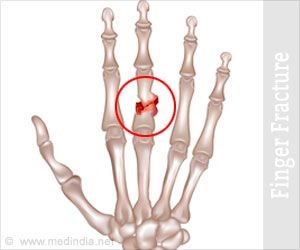
Healing:
You have sustained a simple fracture to your finger. This normally takes up to six weeks to heal. You may use the injured hand for light tasks in the meantime; it is important to keep the fingers moving to prevent stiffness.
Smoking will slow down your healing. We would advise that you stop smoking while your fracture heals. Talk to your GP or go to www.smokefree.nhs.uk for more information.
Pain and Swelling:
Painkillers are important to aid your recovery and should be used as required. Stop non-steroidal anti-inflammatory drugs (NSAIDS) e.g. Ibuprofen after 5-7 days as this will slow bone healing. You may find it continues to be a bit achy and swollen for a few months after your injury. An ice pack will help initially with pain and swelling (make sure the ice is not in direct contact with the skin).
Splint/Strapping:
If you have been given a splint this is for comfort and doesn’t affect the rate of healing. You will either have strapping applied or a “Bedford splint”. Both are correct and suitable for your injury. If you have had strapping applied, the following will advise you how to change it.
Padding should be placed between the two fingers to prevent rubbing and any breakdown of the skin. Ideally, the padding should extend almost the full length of the neighbouring finger.
Including the knuckle, each finger has 3 joints (the places where your finger bends). The exception to this is your thumb. Place 1 piece of tape around both fingers, between the first and second joints and another between the second and third. This allows the injured finger to flex or extend and can still be used to grip.
If your finger starts changing colour, or you get pins and needles sensation that wasn’t there before, then the strapping is too tight. Change the strapping daily to allow skin care.
Strapping
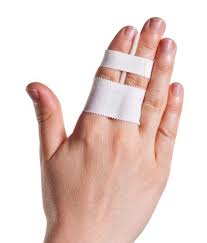
Bedford Splint
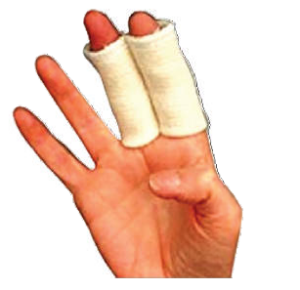
Follow up:
A follow up appointment is not normally needed for this injury. Please contact the Virtual Fracture Clinic if after 6 weeks you still have significant pain or swelling.
Contact us:
If you are concerned about your symptoms, are unable to bend or extend your finger even a small amount, are unable to follow this rehabilitation plan, or notice pain other than in your hand, please contact the Virtual Fracture Clinic.
Caring for your injury: Week by Week
0 – 3 weeks since injury
- √ – Use the strapping and splint for comfort (if you were provided with one)
- √ – Move your fingers gently to prevent stiffness – see initial exercises
3-6 weeks since injury
- √ – Remove the strapping when pain settles and discard splint if you were provided with one
- √ – Start doing your normal activities within the limitations of your pain
- √ – Progress to additional exercises
- X – Avoid heavy lifting tasks and contact sports
6-12 weeks since injury
- √ – The injury has healed. Swelling however can last for several months
- √ – Heavy lifting could be painful for up to 8 weeks. Increase gradually using pain as a guide.
- √ – Return to normal activities
6+ weeks since injury
- X – if you are still experiencing significant pain and swelling then please contact the Virtual Fracture Clinic for advice
Caring for your injury: Initial Exercises
It is important to start gentle exercises straight away to prevent stiffness. You will find pictures and instructions for your exercises below. Use your hand as normally as possible within the limitations of pain. This will not cause further damage but failure to do so may lead to ongoing stiffness.
The following exercises should be performed slowly and regularly every day, keeping the strapping on. The purpose of these exercises is to help you regain full movement.
Little and often (a few of each movement every hour) is better that doing lots of repetitions.
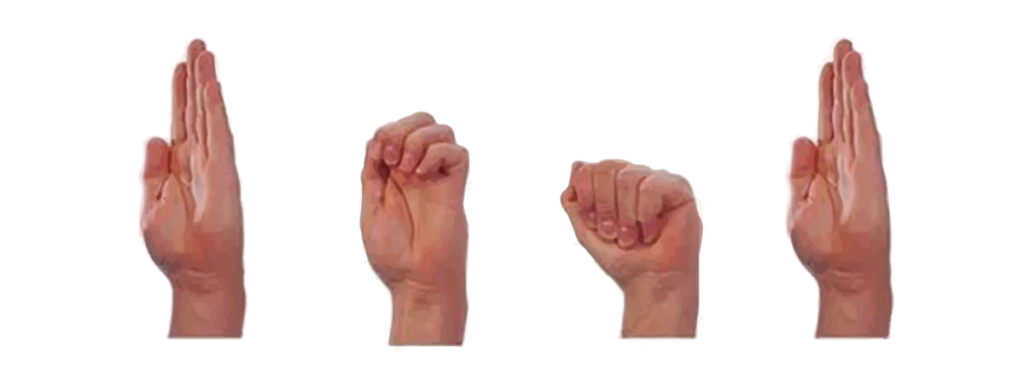
Starting with straight fingers, flex them into a loose fist. Initially pain, swelling and bruising will restrict movement. This is perfectly normal and to be expected. Work your way through the movements as shown in the picture above, ending with straight fingers again.
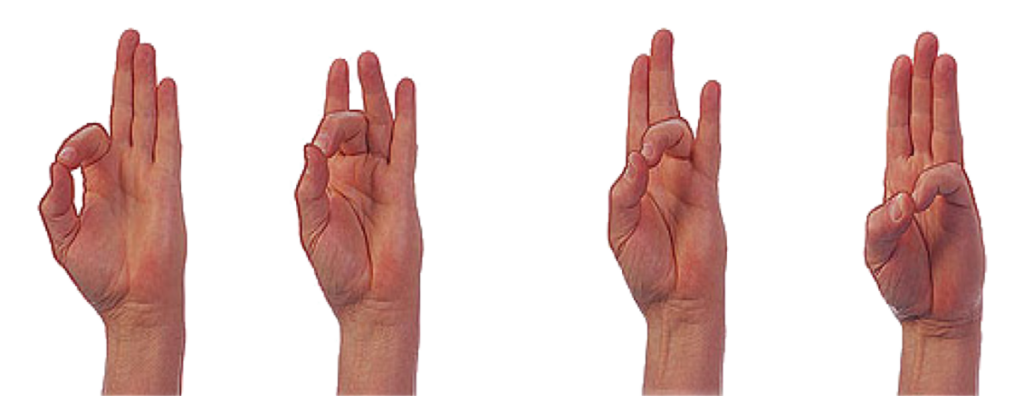
Touch each finger to the thumb. Do not force movement.
Caring for your injury: Additional Exercises
From 6 weeks
As with the initial exercises, the following exercises should be performed slowly and regularly every day. Based on the stability of your fracture, you can now use your other hand to add gentle pressure at the end of movement. Little and often (a few of each movement every hour) is better that doing lots of repetitions.
Starting with straight fingers, flex them into a loose fist. As the swelling reduces your range of movement will increase. Work your way through the movements as shown in the picture above, ending with straight fingers again.
Strength
You can do some simple exercises gradually after 6 weeks to help increase strength based on the stability of the fracture.
Use the elastic band around your fingers to strengthen the muscles in the hand.
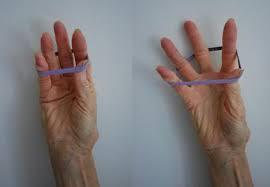
The following pictures show different ball grip exercises. Start with 5 squeezes for each exercise, holding for a couple of seconds. Rest for 2 minutes before completing a further set. Increase the amount of repetitions for each exercise as able.
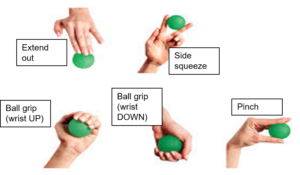
Frequently Asked Questions
I’m concerned about my symptoms and/or I am struggling to return to exercise.
Please contact the Virtual Fracture Clinic.
I am struggling with my strapping/splint. What do I do?
Contact the Virtual Fracture Clinic. You will be referred to the hand therapist who will supervise your rehabilitation.
When can I start driving?
You can return to driving when:
- You are not using the strapping
- You can move comfortably
- You can control the vehicle safely
Always test your ability to drive in a safe environment first
How can I get a certificate for work?
You can self-certify for the first 7 days following your injury. For any longer periods, please discuss the provision of a fitness to work statement with the Virtual Fracture Clinic Team or your GP.
How do I contact the Virtual Fracture Clinic?
Call 01582 718121. Messages will be checked every morning Monday-Friday.
Email VFC@ldh.nhs.uk
